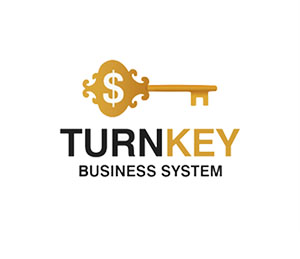What is a Multi Account Manager (MAM) in MT4/MT5 and How Does It Benefit Professional Traders?

What is a Multi Account Manager (MAM) in MT4/MT5 and How Does It Benefit Professional Traders?
In the world of online trading, managing multiple accounts efficiently is a critical task for professional traders, fund managers, and money managers.
Whether you're overseeing client portfolios, managing hedge funds, or running a proprietary trading desk, the ability to execute trades across multiple accounts seamlessly is essential.
This is where the Multi Account Manager (MAM) comes into play. MAM is a powerful tool integrated into popular trading platforms like MetaTrader 4 (MT4) and MetaTrader 5 (MT5), designed to simplify account management and enhance trading efficiency.
In this article, we’ll explore what MAM is, how it works, and why it’s a game-changer for professional traders.
Whether you're overseeing client portfolios, managing hedge funds, or running a proprietary trading desk, the ability to execute trades across multiple accounts seamlessly is essential.
This is where the Multi Account Manager (MAM) comes into play. MAM is a powerful tool integrated into popular trading platforms like MetaTrader 4 (MT4) and MetaTrader 5 (MT5), designed to simplify account management and enhance trading efficiency.
In this article, we’ll explore what MAM is, how it works, and why it’s a game-changer for professional traders.

What is a Multi Account Manager (MAM) in MT4/MT5 and How Does It Benefit Professional Traders?
What is a Multi Account Manager (MAM)?
A Multi Account Manager (MAM) is a specialized software module within MT4/MT5 that allows professional traders and money managers to manage multiple trading accounts simultaneously from a single interface. Essentially, it acts as a bridge between the master account (controlled by the trader or manager) and multiple sub-accounts (belonging to clients or investors).The MAM system is particularly useful for fund managers who handle large pools of capital distributed across numerous accounts. Instead of executing trades individually for each account, the manager can place a single trade on the master account, which is then automatically replicated across all linked sub-accounts based on predefined allocation rules. This ensures consistency, accuracy, and efficiency in trade execution.
How Does MAM Work?
The functionality of MAM revolves around its ability to allocate trades proportionally or equally among sub-accounts. Here’s a breakdown of how it operates:Master Account Control : The money manager operates from a master account, where all trading decisions are made. This includes opening, closing, and modifying positions.
Sub-Account Allocation : Trades executed on the master account are automatically allocated to sub-accounts based on pre-configured settings. These settings can include:
Proportional Allocation : Trades are distributed in proportion to the balance or equity of each sub-account.
Equal Allocation : Trades are split equally among all sub-accounts.
Custom Allocation : Managers can define specific percentages or lot sizes for each sub-account.
Trade Execution : Once a trade is placed on the master account, the MAM system ensures that the same trade is mirrored across all sub-accounts in real-time. This eliminates the need for manual intervention and reduces the risk of errors.
Performance Tracking : MAM provides detailed reporting tools, allowing managers to monitor the performance of individual sub-accounts and the overall portfolio.
Risk Management : Advanced MAM systems often include built-in risk management features, such as stop-loss and take-profit levels, margin monitoring, and exposure limits.
Key Benefits of Using MAM for Professional Traders
1. Streamlined Trade ExecutionOne of the most significant advantages of MAM is its ability to streamline trade execution. Instead of manually placing trades on dozens or even hundreds of sub-accounts, managers can execute a single trade on the master account, which is automatically replicated across all linked accounts. This saves time, reduces operational burdens, and ensures consistent trade execution.
2. Enhanced Efficiency
For professional traders managing large portfolios, efficiency is paramount. MAM eliminates repetitive tasks and minimizes human error, allowing managers to focus on strategy development and market analysis rather than administrative work.
3. Customizable Allocation Rules
MAM offers flexibility in how trades are allocated among sub-accounts. Whether you prefer proportional, equal, or custom allocation, the system can be tailored to meet your specific needs. This level of customization ensures that each client’s investment goals and risk tolerance are respected.
4. Real-Time Monitoring and Reporting
MAM provides real-time insights into the performance of all sub-accounts. Managers can track key metrics such as profits, losses, equity, and drawdowns at a glance. Additionally, comprehensive reporting tools allow for detailed analysis, helping managers make informed decisions and optimize their strategies.
5. Scalability
As your business grows, so does the number of accounts you manage. MAM is highly scalable, capable of handling hundreds or even thousands of sub-accounts without compromising performance. This makes it an ideal solution for expanding trading operations.
6. Improved Client Satisfaction
By ensuring consistent and accurate trade execution, MAM enhances transparency and trust between managers and clients. Clients can rest assured that their investments are being managed professionally and fairly, leading to higher satisfaction and retention rates.
7. Risk Mitigation
Effective risk management is crucial in trading. MAM systems often include advanced risk management tools, such as position sizing, margin control, and automated stop-loss orders. These features help protect both the manager’s and clients’ capital from excessive losses.
8. Cost-Effectiveness
Managing multiple accounts manually can be labor-intensive and costly. MAM reduces overhead costs by automating routine tasks and minimizing the need for additional staff. This makes it a cost-effective solution for growing trading businesses.
Who Can Benefit from MAM?
MAM is not just for institutional traders; it caters to a wide range of professionals in the financial industry:Fund Managers : Oversee large pools of capital across multiple investor accounts.
Proprietary Trading Firms : Manage internal capital distributed among traders.
Money Managers : Handle client portfolios with varying investment objectives.
Hedge Funds : Execute complex strategies across multiple accounts.
Retail Brokers : Offer MAM services to attract professional traders and high-net-worth clients.
How to Set Up and Optimize Your MAM Account
Setting up a MAM account requires careful planning and configuration to ensure optimal performance. Here are some steps to guide you through the process:Choose the Right Broker : Not all brokers support MAM functionality. Select a broker that offers robust MT4/MT5 integration and reliable MAM solutions.
Define Allocation Rules : Decide how you want trades to be allocated among sub-accounts. Consider factors such as account size, risk tolerance, and investment goals.
Test the System : Before going live, test your MAM setup using a demo account. Simulate various trading scenarios to ensure the system behaves as expected.
Monitor Performance : Regularly review the performance of your sub-accounts and adjust allocation rules if necessary. Use the reporting tools provided by MAM to identify areas for improvement.
Educate Clients : Ensure your clients understand how MAM works and what to expect in terms of trade execution and performance.
Leverage Automation : Take full advantage of MAM’s automation features to reduce manual workload and improve efficiency.
Challenges of Using MAM
While MAM offers numerous benefits, it’s important to be aware of potential challenges:1. Technical Complexity
Setting up and configuring MAM can be technically challenging, especially for beginners. It may require assistance from IT professionals or the broker’s support team.
2. Broker Dependency
Since MAM is integrated into MT4/MT5 platforms provided by brokers, any issues with the broker’s infrastructure (e.g., server downtime) can disrupt trading activities.
3. Limited Customization
Some MAM systems have limited customization options, which may not suit the unique requirements of certain traders or managers.
4. Regulatory Compliance
Depending on your jurisdiction, there may be regulatory requirements governing the use of MAM systems. Ensure compliance with local laws to avoid legal complications.
Conclusion: Elevating Your Trading Business with MAM
The Multi Account Manager (MAM) is a revolutionary tool that empowers professional traders and money managers to operate more efficiently and effectively. By enabling simultaneous trade execution across multiple accounts, MAM simplifies account management, enhances scalability, and improves client satisfaction. Its customizable allocation rules, real-time monitoring capabilities, and advanced risk management features make it an indispensable asset for anyone managing multiple trading accounts.
Whether you’re a fund manager overseeing millions in assets or a retail broker looking to expand your service offerings, MAM provides the tools you need to succeed in today’s competitive trading environment. With proper setup, optimization, and adherence to best practices, MAM can transform your trading operations and pave the way for long-term growth and profitability.
The Multi Account Manager (MAM) is a revolutionary tool that empowers professional traders and money managers to operate more efficiently and effectively. By enabling simultaneous trade execution across multiple accounts, MAM simplifies account management, enhances scalability, and improves client satisfaction. Its customizable allocation rules, real-time monitoring capabilities, and advanced risk management features make it an indispensable asset for anyone managing multiple trading accounts.
Whether you’re a fund manager overseeing millions in assets or a retail broker looking to expand your service offerings, MAM provides the tools you need to succeed in today’s competitive trading environment. With proper setup, optimization, and adherence to best practices, MAM can transform your trading operations and pave the way for long-term growth and profitability.









Report
My comments